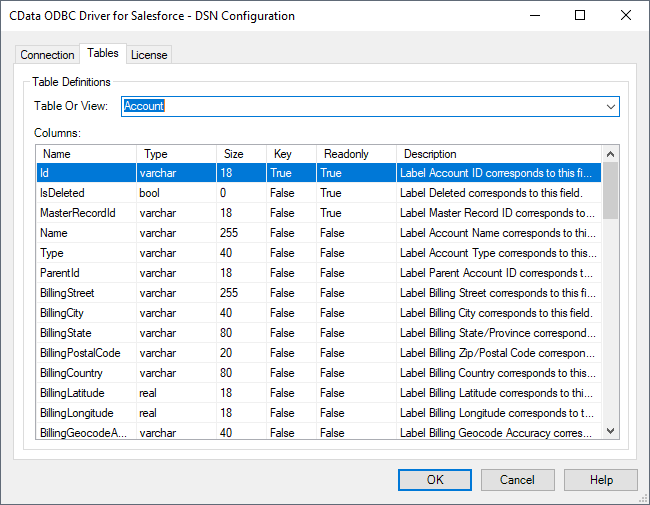Model Context Protocol (MCP) finally gives AI models a way to access the business data needed to make them really useful at work. CData MCP Servers have the depth and performance to make sure AI has access to all of the answers.
Try them now for free →How to connect PolyBase to SharePoint
Use CData drivers and PolyBase to create an external data source in SQL Server 2019 with access to live SharePoint data.
PolyBase for SQL Server allows you to query external data by using the same Transact-SQL syntax used to query a database table. When paired with the CData ODBC Driver for SharePoint, you get access to your SharePoint data directly alongside your SQL Server data. This article describes creating an external data source and external tables to grant access to live SharePoint data using T-SQL queries.
NOTE: PolyBase is only available on SQL Server 19 and above, and only for Standard SQL Server.
The CData ODBC drivers offer unmatched performance for interacting with live SharePoint data using PolyBase due to optimized data processing built into the driver. When you issue complex SQL queries from SQL Server to SharePoint, the driver pushes down supported SQL operations, like filters and aggregations, directly to SharePoint and utilizes the embedded SQL engine to process unsupported operations (often SQL functions and JOIN operations) client-side. And with PolyBase, you can also join SQL Server data with SharePoint data, using a single query to pull data from distributed sources.
About SharePoint Data Integration
Accessing and integrating live data from SharePoint has never been easier with CData. Customers rely on CData connectivity to:
- Access data from a wide range of SharePoint versions, including Windows SharePoint Services 3.0, Microsoft Office SharePoint Server 2007 and above, and SharePoint Online.
- Access all of SharePoint thanks to support for Hidden and Lookup columns.
- Recursively scan folders to create a relational model of all SharePoint data.
- Use SQL stored procedures to upload and download documents and attachments.
Most customers rely on CData solutions to integrate SharePoint data into their database or data warehouse, while others integrate their SharePoint data with preferred data tools, like Power BI, Tableau, or Excel.
For more information on how customers are solving problems with CData's SharePoint solutions, refer to our blog: Drivers in Focus: Collaboration Tools.
Getting Started
Connect to SharePoint
If you have not already, first specify connection properties in an ODBC DSN (data source name). This is the last step of the driver installation. You can use the Microsoft ODBC Data Source Administrator to create and configure ODBC DSNs. To create an external data source in SQL Server using PolyBase, configure a System DSN (CData SharePoint Sys is created automatically).
Set the URL property to the base SharePoint site or to a sub-site. This allows you to query any lists and other SharePoint entities defined for the site or sub-site.
The User and Password properties, under the Authentication section, must be set to valid SharePoint user credentials when using SharePoint On-Premise.
If you are connecting to SharePoint Online, set the SharePointEdition to SHAREPOINTONLINE along with the User and Password connection string properties. For more details on connecting to SharePoint Online, see the "Getting Started" chapter of the help documentation
Click "Test Connection" to ensure that the DSN is connected to SharePoint properly. Navigate to the Tables tab to review the table definitions for SharePoint.
Create an External Data Source for SharePoint Data
After configuring the connection, you need to create a master encryption key and a credential database for the external data source.
Creating a Master Encryption Key
Execute the following SQL command to create a new master key, 'ENCRYPTION,' to encrypt the credentials for the external data source.
CREATE MASTER KEY ENCRYPTION BY PASSWORD = 'password';
Creating a Credential Database
Execute the following SQL command to create credentials for the external data source connected to SharePoint data.
NOTE: IDENTITY and SECRET correspond with the User and Password properties for SharePoint.
CREATE DATABASE SCOPED CREDENTIAL sharepoint_creds WITH IDENTITY = 'sharepoint_username', SECRET = 'sharepoint_password';
Create an External Data Source for SharePoint
Execute a CREATE EXTERNAL DATA SOURCE SQL command to create an external data source for SharePoint with PolyBase:
- Set the LOCATION parameter , using the DSN and credentials configured earlier.
For SharePoint, set SERVERNAME to the URL or address for your server (e.g. 'localhost' or '127.0.0.1' for local servers; the remote URL for remote servers). Leave PORT empty. PUSHDOWN is set to ON by default, meaning the ODBC Driver can leverage server-side processing for complex queries.
CREATE EXTERNAL DATA SOURCE cdata_sharepoint_source WITH ( LOCATION = 'odbc://SERVER_URL', CONNECTION_OPTIONS = 'DSN=CData SharePoint Sys', -- PUSHDOWN = ON | OFF, CREDENTIAL = sharepoint_creds );
Create External Tables for SharePoint
After creating the external data source, use CREATE EXTERNAL TABLE statements to link to SharePoint data from your SQL Server instance. The table column definitions must match those exposed by the CData ODBC Driver for SharePoint. You can refer to the Tables tab of the DSN Configuration Wizard to see the table definition.

Sample CREATE TABLE Statement
The statement to create an external table based on a SharePoint MyCustomList would look similar to the following:
CREATE EXTERNAL TABLE MyCustomList( Name [nvarchar](255) NULL, Revenue [nvarchar](255) NULL, ... ) WITH ( LOCATION='MyCustomList', DATA_SOURCE=cdata_sharepoint_source );
Having created external tables for SharePoint in your SQL Server instance, you are now able to query local and remote data simultaneously. Thanks to built-in query processing in the CData ODBC Driver, you know that as much query processing as possible is being pushed to SharePoint, freeing up local resources and computing power. Download a free, 30-day trial of the ODBC Driver for SharePoint and start working with live SharePoint data alongside your SQL Server data today.

